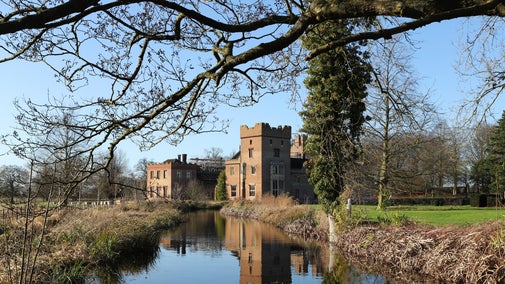
Donate
Everyone needs nature, now more than ever. Donate today and you could help people and nature to thrive at the places we care for.

The winter closure at Woolsthorpe provides the house team the opportunity to complete a deep clean of the house and collection as well as conduct much needed conservation repair work. Find out more about the careful cleaning methods the team use and how they are always on the lookout for unwanted guests.
Collections and House Officer, Jennie Johns, and her team of volunteer conservation cleaners will be working methodically from the top floor of the Manor down throughout the house to the Parlour, Hall and Kitchen.
Cleaning products are used sparingly; Traffic Wax for the wooden floors and a micro-crystalline wax polish, blended to a formula used by the British Museum, for the furniture.
The team use vacuum backpacks to minimise any potential damage to furniture and the collection. They use the softest brushes to sweep the dust into the nozzle of the vacuum cleaners, which have variable suction strengths. Grit from paths around Woolsthorpe makes its way into the house and this approach prevents the grit acting as an abrasive during cleaning.
Everything from light fittings and door frames to pewter serving spoons and pepper pots are inspected, cleaned and recorded so that the team know as much as possible about the condition of the objects in their care.

All furniture and floors are regularly cleaned, vacuumed and checked for evidence of insect pests. There are many pests which can cause damage to historic houses and collections, the main ones the team are on the lookout for are silverfish and woodworm. Constant vigilance is key to caring for the collection.
You may have spotted small plastic boxes tucked into corners or against walls in old historic buildings. These are pest traps, they are collected quarterly and the contents reviewed. Remedial action can then be taken if needed.
The temperature and moisture content of the air in every room is checked using a handheld gadget called an Elsec Environmental Monitoring Device. Not only does this help maintain the correct atmosphere to protect the fabric of the Manor and its contents, but it also helps prevent insect infestation, as they tend to thrive in moist conditions.
Winter also gives the team a good opportunity to carry out any building works in the house which need completing. In 2018 the kitchen ceiling in the Manor was repaired following the burst pipe earlier in the year, along with a repair to the wall in the Hall alcove, which suffered some visitor wear and tear.
The Science Centre also needed repair work in 2018 when high winds that year caused some sections of ceiling plaster to fall down.
As well as planned conservation and maintenance works, sometimes situations arise that need urgent attention. In 2019 investigations revealed damaged oak lintels above a window in the Parlour which needed to be repaired quickly in order to avoid any major structural issues.
Two lintels showed extensive historic death watch beetle damage, with the wood crumbling away into a fine dust in places. Stonemasons removed the damaged oak lintels, supporting the Red Chamber floor above until the new lintels were installed.

The better-preserved lintel was used as a template, ensuring that the new English oak lintels were a like-for-like replacement. The lintels were shaped to fit off site and then fitted.
The gaps were filled with a lime mortar that needed to cure at its own pace. The room was kept cool, as any attempt to heat the room and force the drying out process can cause the mortar to flake. Once fully dry, the laths were constructed and then plastered.
The new lintels have been marked, ensuring that in 300 years or so, future conservationists can easily date the work done to preserve the Parlour and Manor in 2019.
The work to replace these lintels was crucially important in preserving the structural integrity of the Manor. The rest of the house, whilst suffering from wear and tear and age deterioration, is in good structural shape and is being constantly monitored for any changes.
With your ongoing support, we're able to continue our vital conservation work. Thank you for helping to protect these special places.

Everyone needs nature, now more than ever. Donate today and you could help people and nature to thrive at the places we care for.
Read about the history of Woolsthorpe Manor and the impact it had on its most famous resident, Isaac Newton.

Find out how to join the volunteer team at Woolsthorpe Manor and how you can play your part in bringing the story of Sir Isaac Newton to life for our visitors.

Families can explore, experiment and discover Newton's story and science at Woolsthorpe Manor.

Read about our strategy, which focuses on restoring nature, ending unequal access and inspiring more people.

We believe that nature, beauty and history are for everyone. That’s why we’re supporting wildlife, protecting historic sites and more. Find out about our work.
